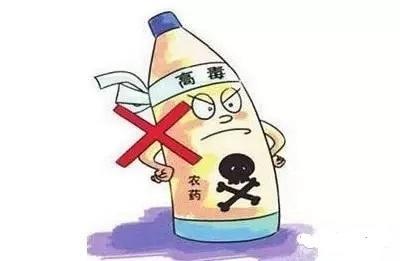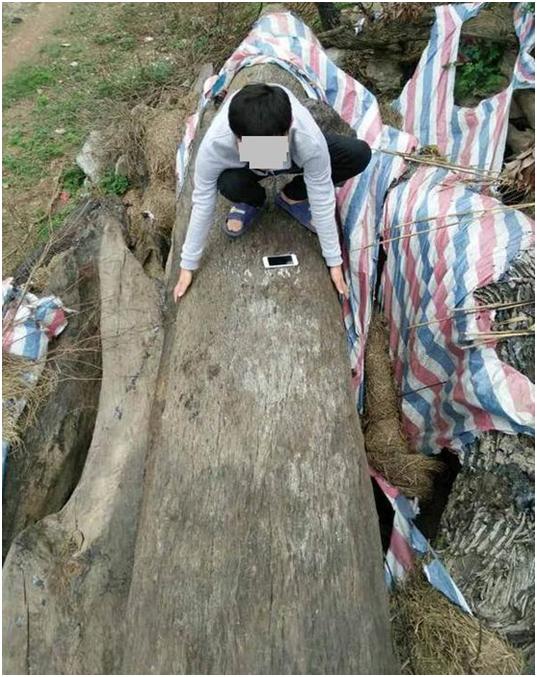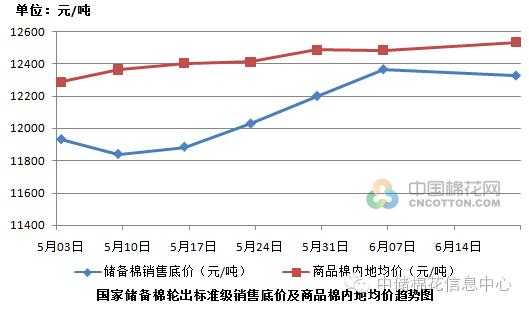You want to be efficient. Low toxicity. 38 low-residue pesticides are all here!
With the vigorous implementation of the production of pollution-free agricultural products in China, it is efficient and low. Toxic, low-residue pesticides are gradually respected by the majority of consumers. However, some highly toxic and highly toxic pesticides still account for nearly 50% in China's pesticide market. In addition to the price reasons, the reason why many farmers choose highly toxic pesticides is that the effect is not obvious due to improper use, or some people simply do not distinguish between true and false and are confused by some fake and true trade names. The following introduces the nature, composition, commodity name, dosage form, targeted application method, national officially registered production enterprises and contact telephone number of some commonly used pesticide products with high efficiency, low toxicity and low residue, so as to make a contribution to the construction of a harmonious and environmentally friendly society.

China is one of the earliest countries to use pesticides and has a very long history. The production of BHC began in 1950, the first organophosphorus insecticide production plant was built in 1957, and the production of organophosphorus pesticides began. In the 1960s and 1970s, organochlorine, organophosphorus and carbamate insecticides were mainly developed, as well as fungicides and plant growth regulators. In 1973, China stopped using mercury preparations, and developed fungicides such as Daojianjing and carbendazim to replace mercury preparations. From the late 1970s to 1980s, new varieties of pesticides with high efficiency and safety have been continuously developed. In 1983, China stopped using high residual organochlorine insecticides such as BHC and DDT, replaced the continuous development of pesticides, expanded the output of organophosphorus and carbamate pesticides, and developed pyrethroids and other pesticides. At the same time, fungicides and herbicides have also been developed and applied. In 1995, there were 218 varieties of raw pesticides and 839 kinds of preparations in China. By 2005, the varieties of raw pesticides in China have developed to more than 260 varieties and more than 3000 preparation products. In so many products, less than 1/3 of the varieties belong to pesticides with high efficiency, low toxicity and low residues.
In 2003, the country recommended a number of pesticide varieties with high efficiency, low toxicity and low residue. This paper introduces the most common and commonly used pesticides in the market.
1. Matrine
(1) basic characteristics
Matrine, also known as matrine, Sophora flavescens insecticides, etc., is made from the roots, stems, leaves and fruits of Sophora flavescens by ethanol and other organic solvents. Its components are mainly matrine, oxymatrine and other alkaloids. The pure product is white powder with no mutagenicity, no embryotoxicity and no teratogenicity. It has weak accumulation.
Matrine is a broad-spectrum botanical insecticide. pests can paralyze the nerve center after contact with the insecticide, and the protein clogs the stomata and suffocates to death. It has low toxicity to people and animals, contact and stomach toxicity, and has obvious control effect on cabbage insects, aphids and red spiders on all kinds of crops, as well as underground pests. Preparation: 0.2%, 0.26%, 0.3%, 0.36%, 0.5% matrine water agent, 0.36%, 0.38%, 1% matrine soluble liquid, 0.38% matrine EC, 1.1% matrine powder.
(2) objects of prevention and control
1. Control apple red spider: after the apple blossoms, the red spider overwintering eggs begin to hatch to the end of incubation, which is the appropriate period for control; control millet armyworm; control vegetable green insects, aphids, this product has good effect on instar larvae, poor effect on 4th instar larvae; control leek maggots.
(3) points for attention
1. Read the label carefully before using it.
two。 Soon after spraying, the rain needs to be sprayed again.
3. It is strictly forbidden to mix with alkaline pesticides.
4. This product has no internal absorption, pay attention to spray evenly and thoughtfully when spraying.
5. Store in shade, shade, ventilated place, avoid storage in high temperature and hot sun.
2. Azadirachtin
(1) basic characteristics
Azadirachtin, also known as Guoguojing, Sichuan (India) azadirachtin, etc., English common name azadirachtin. It is extracted from neem Azadriachta indica and is mainly distributed in the seed nucleus and secondly in the leaves. The action mechanism is special, and it has a variety of plant-derived active substances that can control pests, and has the functions of anti-feeding, avoiding, contact killing, stomach toxicity, internal absorption and inhibiting the growth and development of insects, so it is internationally recognized as the most important insect antifeedant. The structure of ecdysone is similar to that of insects, which is an inhibitor of ecdysone in insects and reduces the release of ecdysone. It can also directly destroy the structure of epidermis or block the synthesis of epidermal chitin, or interfere with respiratory metabolism and affect the development of reproductive system. The specific function is to destroy or interfere with the growth and development of eggs, larvae or pupae, prevent the peeling of nymphs or larvae, change the mating and sexual behavior of insects, resist feeding on nymphs, larvae and adults, prevent adults from spawning and destroy ovarian development. Make the adult sterile. High efficiency, broad spectrum, no pollution, no residue, not easy to produce drug resistance, harmless to warm-blooded animals such as humans and animals, and safe to natural enemies of insect pests.
Azadirachtin is safe to humans, animals, birds and bees, does not affect predatory and parasitic natural enemies, and is easily degraded in the environment. The common dosage form is 0.3% azadirachtin EC.
(2) scope of prevention and control
The application of azadirachtin insecticide can effectively control cotton bollworm, pine caterpillar, diamondback moth, Japanese beetle beetle, tobacco night moth, grain fruit moth, Spodoptera litura, diamondback moth, diamondback moth, African migratory locust, corn borer, rice brown planthopper, thrips, fruit flies, armyworm and other pests. It can be widely used in grain, cotton, forest trees, flowers, melons and fruits, vegetables, tobacco, tea, coffee and other crops. It will not cause the pests to become resistant to them. Azadirachtin insecticides applied to the soil can be absorbed by the roots of cotton, rice, corn, wheat, broad bean and other crops, and transported to the stems and leaves, so that the whole plant has insect resistance. For the control of cruciferous vegetable diamondback moth, the pesticide was applied in time during the period of occurrence of damage to Plutella xylostella and the peak period of 1-2 instar larvae.
(3) points for attention
1. This product should not be mixed with alkaline pesticides.
two。 The action speed of the drug is slow, so it is necessary to grasp the appropriate period of application and not to increase the dosage at will.
3. Apply medicine early in the morning or evening.
4. The interval of each spray is 10 days in winter, which can be shortened in summer and rainy season.
5. 0.03% neutral washing powder can be added according to the amount of spray, which can improve the control effect.
III. Nicotine
(1) basic characteristics
Tobacco powder can be used for spraying; tobacco powder, broken tobacco stems or sticks (plus quicklime) can be soaked in water, and the smoke residue can be filtered and sprayed. Now it is mainly extracted from nicotine or made into nicotine sulfate. Nicotine belongs to botanical insecticides, which can be used to make pesticides from the leftovers of tobacco processing. It is easy to dissolve in water, unstable, volatile, strongly irritating, toxic to humans and animals, less toxic to fish, contact, fumigation and stomach toxicity to pests, strong quick killing and short duration. Contact botanical insecticides mainly from tobacco. It has high toxicity to higher animals, moderate toxicity to fish and other aquatic organisms, high toxicity to silkworm, high insecticidal activity, inhibition of nerve tissue and asphyxiation to death. The quick-acting residual period is short, there is no residual problem, and it is safe for crops. The insecticidal spectrum is broad. The main dosage form is 10% nicotine EC.
(2) scope of prevention and control
Mainly used in vegetables, fruit trees, tea trees, rice and other crops to control aphids, cabbage night moth, thrips, bugs, leaf hoppers, soybean heart borer, cabbage borer, leaf miner, leaf miner, peach heart borer, pear heart borer, mites, yellow striped beetle, rice borer, leafhopper, planthopper and so on. The application should be uniform and the residual period is about 7 days. Do not mix with pharmaceuticals that are easily decomposed under alkaline conditions. Free nicotine is mainly used for contact killing and fumigation, while nicotine sulfate is mainly used for contact killing and stomach poisoning. adding a certain amount of soap and alkali to the diluent can improve the efficacy. High bee spray occurred in adult Liriomyza huidobrensis with 1000 times of nicotine EC.
- Prev

The villagers went up to the mountain to cut firewood and picked up the sky-high price of Jinshinan! Let my son drop out of school and watch day and night! I am speechless
The villagers went up to the mountain to cut firewood and picked up the sky-high price of Jinshinan! Let my son drop out of school and watch day and night! I am speechless
- Next

In a word, the purchase price of cotton will reach 8 yuan / kg in 2016.
In a word, the purchase price of cotton will reach 8 yuan / kg in 2016.
Related
- A course of planting techniques and methods on how to grow carrots
- How to plant the latest tulips?
- Is it better to pick tea in the morning or in the afternoon? When is the best time for tea to be picked? what is the third or fifth tea?
- Launch Yuanxiao Happy combination Haocha + Tea Yuan healthy Taste
- Penghu Tourism "Fireworks 20 Parade with You"
- 2022 West Lake Happiness holds "Digital Revitalization Voucher" and draws iphone13 and laptop.
- Banqiao Fuzhou social houses are designed to change start-up combined with police elimination to create a safe and livable environment
- The convenient measure of "mechanical weeding" in Xinbei has been abused and the Agriculture Bureau has imposed heavy penalties on the illegal land consolidation.
- Changgeng University Joins Hands with Four Memory Factories to Rescue Memory Talent Shortage
- The list of Taiwan's top 100 MVP managers is listed by the Director-General of the Farmers' Association of Sanxia District.

